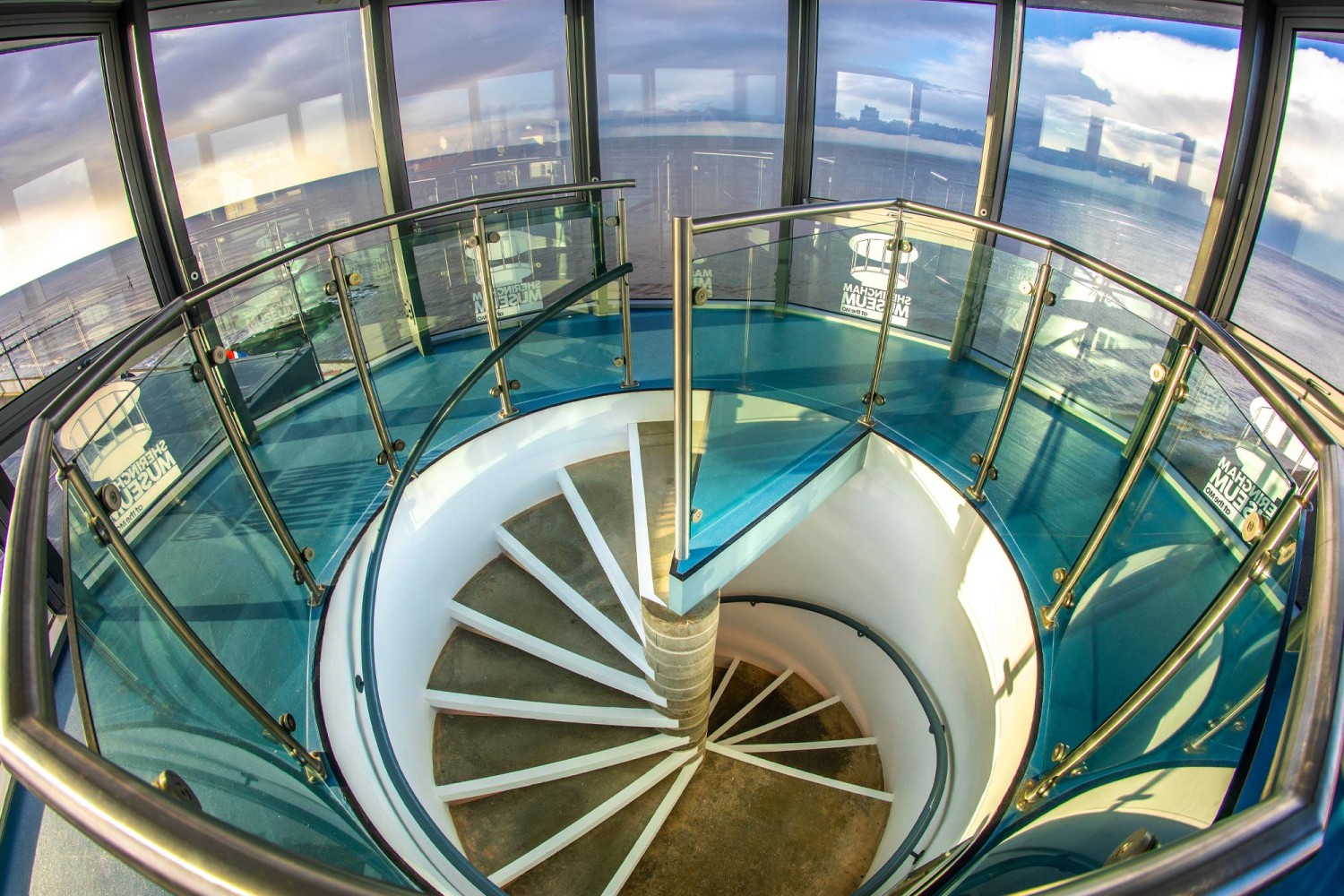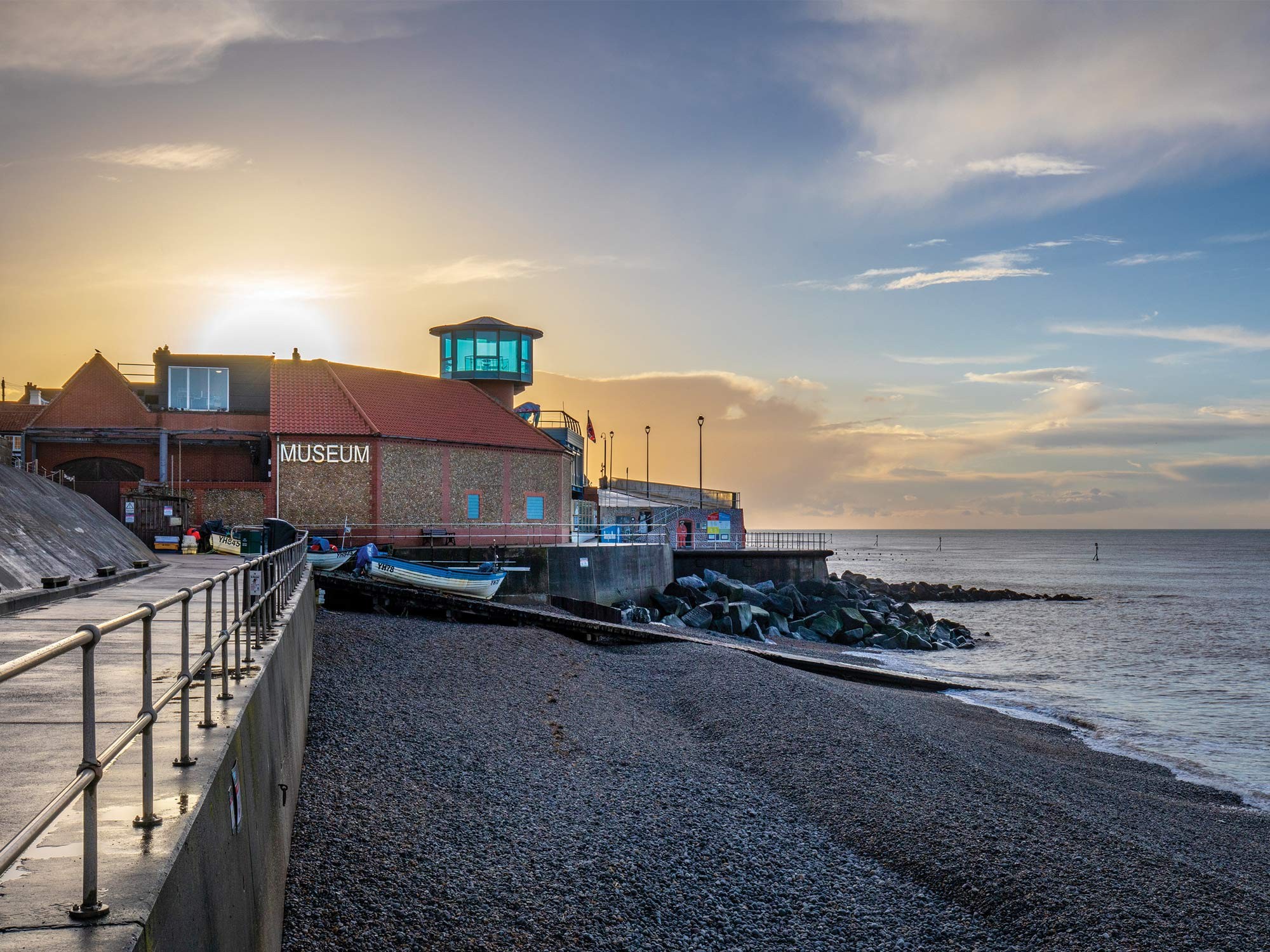
The sparkling jewel in Sheringham’s crown
Recognised as one of the best hidden gem attractions in the country by VisitEngland, Sheringham Museum is preserving the past and shaping the future of a vibrant coastal town
Standing proudly on the shimmering seafront in one of North Norfolk’s most beautiful locations, Sheringham Museum is the true definition of a hidden gem. Showcasing a sea of incredible artefacts in carefully crafted displays, it tells the story of a captivating coastal town and its fascinating people.
Established within a couple of small cottages on the high street, the museum was started more than three decades ago by a group of enthusiastic locals wanting to conserve and celebrate Sheringham’s remarkable past. As tales and treasures started pouring in, it soon outgrew the premises and moved to its current location in 2010. Situated on the east end of the promenade, the present museum features an astounding collection of social history items, a fantastic fleet of boats, well-preserved fishing relics and a spectacular viewing tower offering panoramic vistas of the town.
“We strive to tell a changing story of coastal life by illustrating the rise, fall, and renewal of Sheringham through the centuries,” says Curator Lisa Little. “Many visitors are amazed by the size of the museum and the rich array of exhibits it contains. You could easily spend a few hours exploring the building’s quirky corners, unravelling the tales of this enchanting seaside town and the extraordinary folk who shaped its heritage.”
Sheringham is thought to be the only place in the world to possess five of its original lifeboats, four of which are housed in the museum along with three locally-built fishing crafts. On the first floor you’ll find an exquisitely detailed row of re-created shopfronts displaying the traditional tools and trades that characterised the town before industrialisation changed the face of its high street. Artefacts relating to Sheringham’s past include the Zeppelin bomb that hit the town in 1915 (the first bomb to be dropped on Great Britain during World War One) as well as a fine selection of work by famous local artists.
Particularly enthralling is the Olive Edis gallery, which paints a picture of the life and work of one of the most influential female photographers in history. “Olive had a studio in Sheringham for about 50 years and used it to make portraits of everyone from princes, prime ministers and poets to local people,” says Lisa. “Her relationship with the town’s fisherfolk is evident in her striking photographs of them, which preserve their unique sense of character and capture the sparkle in their eyes.”
The museum also takes pride in its display of woollen ganseys, which are beautifully knitted pullovers that once stood as the icon of the coastal fishing industry. The impressive collection was established by a bequest of significant artefacts from the late Michael Harvey (known for his detailed research on textile work) and now includes more than 40 historic garments, making it one of national importance.
“The gansey was one of the most complicated and distinctive of all jumpers, made for fishermen who required hard-wearing clothing to withstand the sea spray,” says museum Trustee Lesley Lougher, a driving force behind the growing gansey collection. “Since our first dedicated exhibition in 2014, they’ve become central to the museum’s identity. We’re now home to the East Anglia Gansey Group and have established International Gansey Day on November 25th. Textiles are a special part of our social history so it’s important to showcase their significance.”
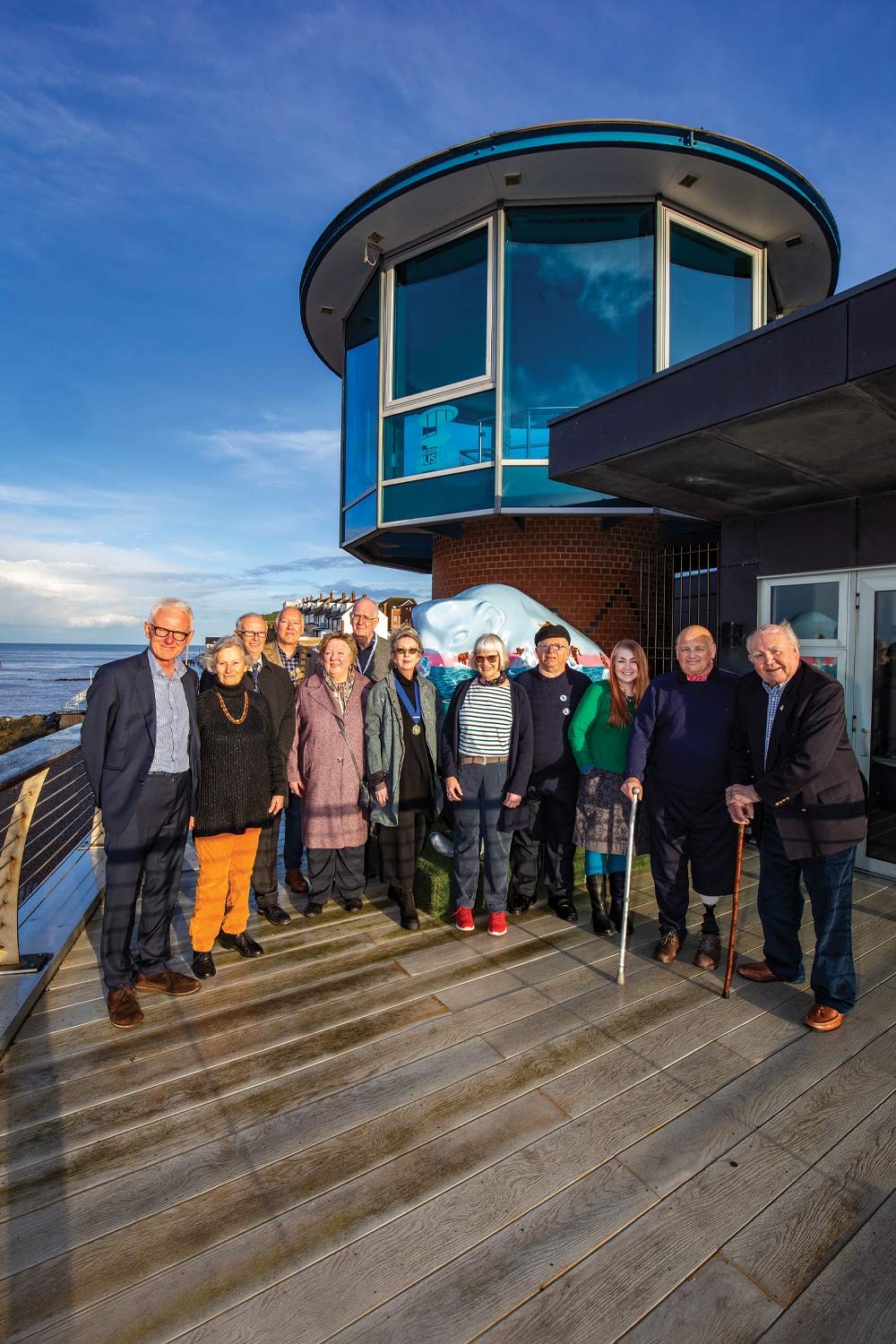
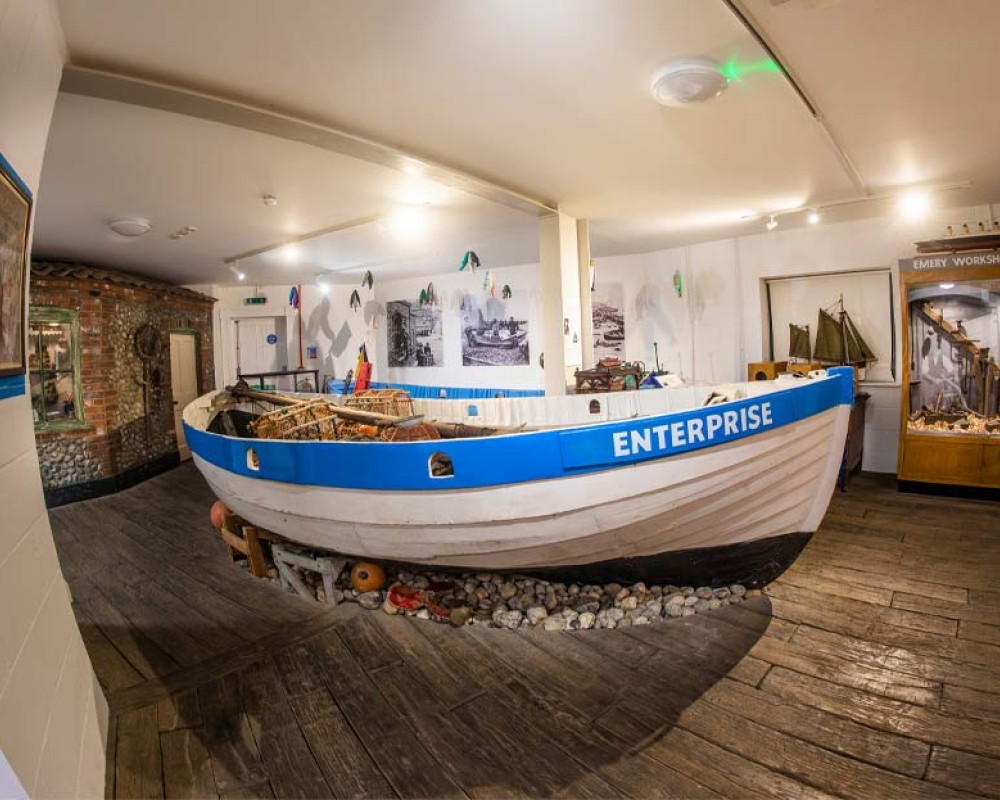
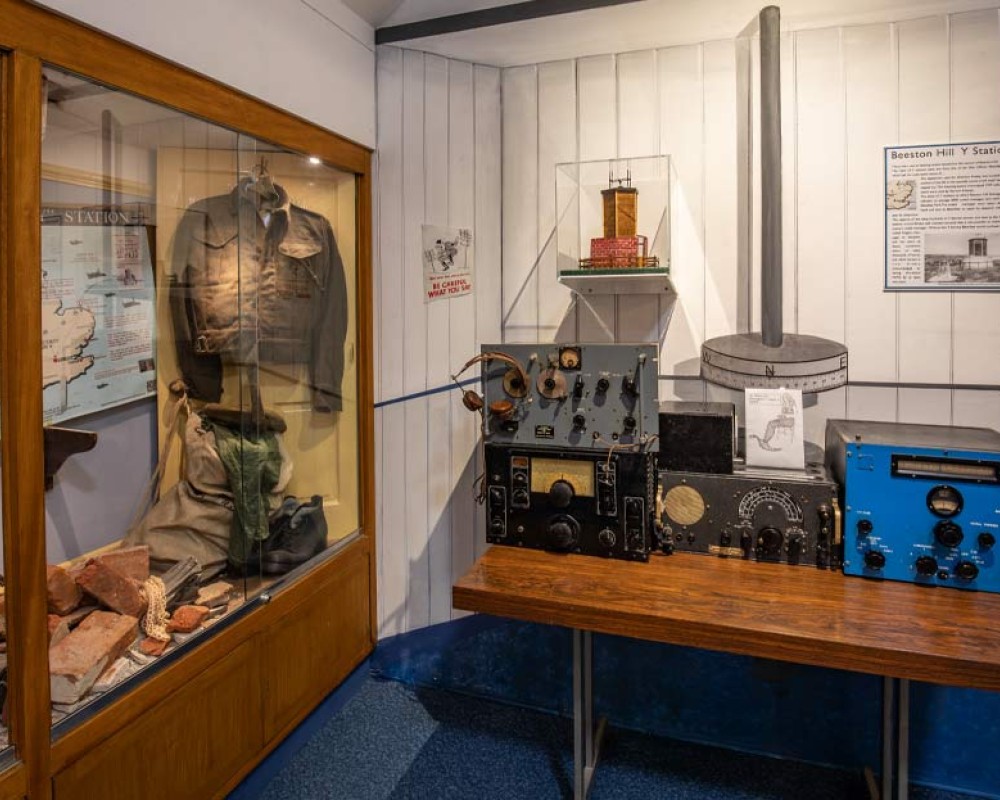
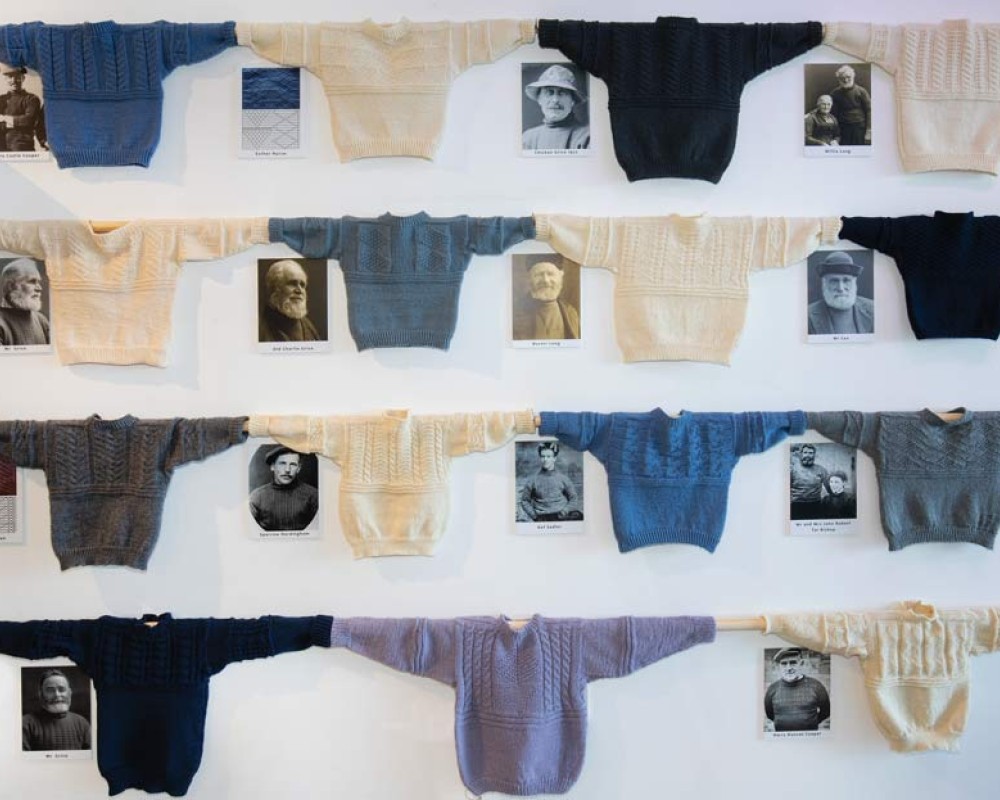
Gansey knitting happens to feature heavily in the museum’s major exhibition this year, which shines a spotlight on life out at sea. Entitled ‘Navigation: Seafaring, Sheringham & Shackleton’, it celebrates the town’s links with two famous polar explorers (Captain Robert Scott and Ernest Shackleton) and details the thrilling travels of hardworking local fishermen.
“Scott and Shackleton were principal figures in the golden age of Antarctic exploration and they both lived in Sheringham for short periods,” says Lisa. “We know Scott arrived in 1905 and resided at The Burlington Hotel, staying long enough to become a member of the Sheringham Golf Club. Shackleton lived here in 1910 and is known to have practiced rowing with the crew of the J.C. Madge lifeboat, which is one of our permanent exhibits. We even found a portrait of him wearing his own fisherman’s gansey, taken by none other than Olive Edis! It’s a fantastic link to Sheringham’s past we knew we needed to showcase.”
‘Navigation’ is undoubtedly one of the museum’s most exciting annual exhibitions yet, filling the entirety of the building’s top deck with spectacular displays, incredible artefacts and intriguing stories. Every element has been carefully researched and pieced together by a team of innovative volunteers, who selflessly devote countless hours to making Sheringham Museum the special place it’s proud to be.
“As an independent museum and registered charity, we depend on our exceptional volunteers and their talents,” says Lisa. “There are so many inspiring, enthusiastic people involved with its running and a whole host of skills I love tapping into. They pour their hearts into developing the most stunning displays for the humble payment of tea and biscuits, never ceasing to amaze me with their delightfully creative ideas.”
With its marvellous treasures and passionate community, Sheringham Museum is a wonder worth visiting. The ‘Navigation’ exhibition will run until the museum’s end of season on 28th October – it’s a fantastic event you definitely don’t want to miss! For more information please visit www.sheringhammuseum.co.uk
